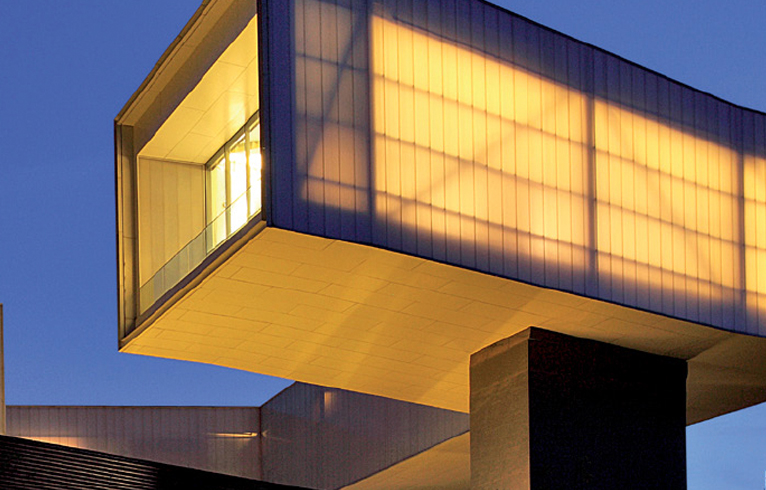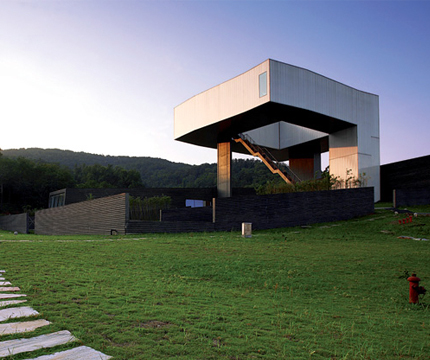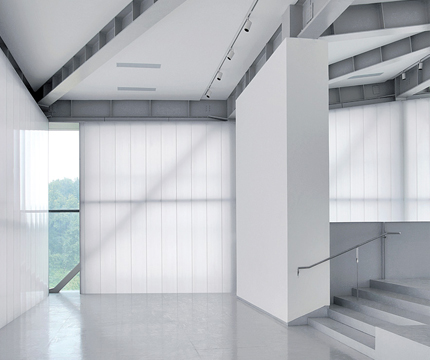ENMESHED IN MID-AIR: THE NANJING SIFANG ART MUSEUM
| August 31, 2011 | Post In LEAP 10

WHEN STEVEN HOLL laid eyes on his first commission in China, the site was “overgrown with vegetation— no roads, site boundaries, no clear site plan.” Initial plans called for an “Art and Architecture Museum.” That day, he “began making sketches . . . based on [his] understanding of axonometric perspective in Chinese painting.” In the sketches, a peculiar white building twists among layers of black and grey mountains, not unlike a snake cube puzzle unwinding along a hillside.

Holl already had the entire design for the museum thought out then, in 2003. To create a building that would “rise to reach the distant view to the partially walled city of Nanjing,” the grey and black of the city’s walls would become the hues of the building’s courtyard. He decided to give new use to some of Nanjing’s demolished old homes, collecting and arranging their old grey bricks “in a herringbone pattern paving a courtyard between bamboo-formed concrete walls.”
More than a few of Holl’s previous creations feature mo- bile, twisting spaces placed in stiff cubic blocks that together comprise strange, snaking, Swiss-cheese-like forms. He calls it the “Enmeshed Experience.” Visually, tactilely, his buildings shift shapes, like moving human bodies. No longer is space pure geometric form, but a complex, stratified, extended, and even ambiguous blend that recalls the experience of walking through a Chinese garden: take one step, and the whole view changes.
The Sifang Art Museum’s design is an embodiment of Holl’s long-held architectural views. Here, he has simply taken his “enmeshed” space and hung it in mid-air, adding the large, jutting windows and long staircases of which he is so fond. The reflections from an unusually-shaped pool set into the ground further complicate the visual experience of the space.

Sadly, though, the entire building looks as if it were formed by someone with an over-developed sense of shape. The “delicate images” of his widely-praised “fragile architecture” here become forceful, concrete forms whereby perception is no longer cloaked in reason. Instead, they reveal utter perceptual mania. The building looks like a huge one-eyed snake flying over the mountain scenery outside Nanjing. It sticks out like a sore thumb, an overly aggressive affront to the eyes. Whereas Holl showed so much compassion for Nanjing’s demolished homes, he seems to have completely ignored the natural environment around the Sifang Museum.
As I see it, he’s gotten the most important point thing about axonometric perspective in Chinese painting wrong. In Chinese painting, buildings are never the focus; nature is.

